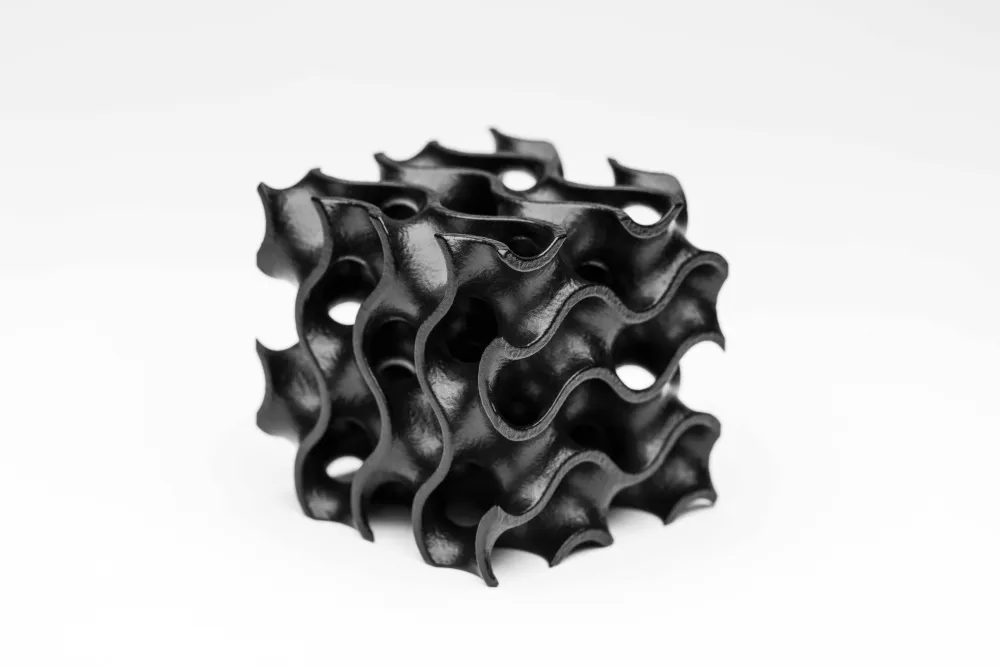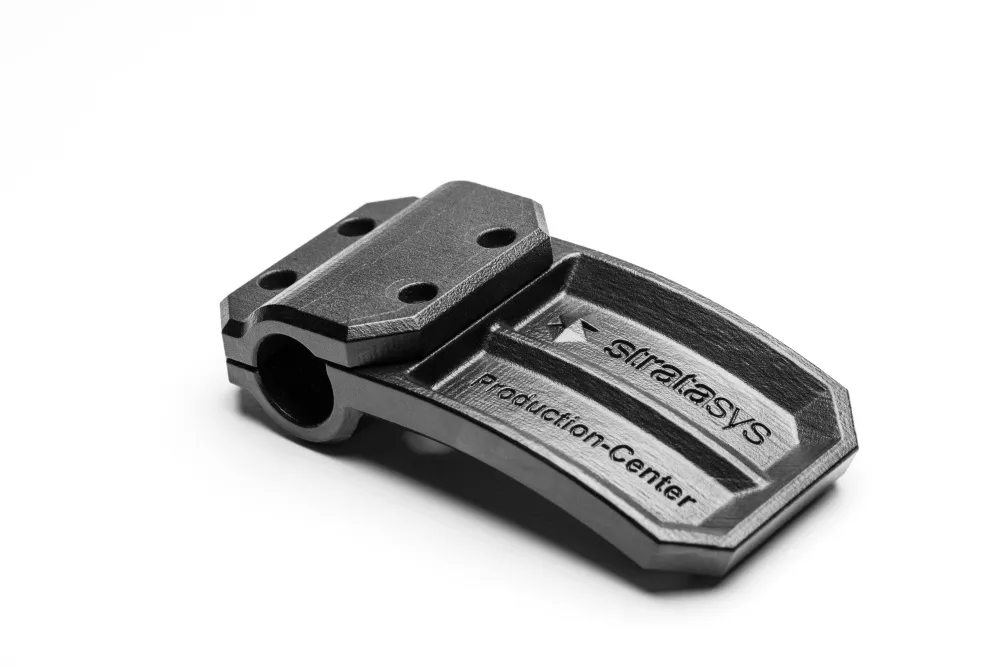Binder Jetting and Stratasys? Meet SAF Technology
Exciting news from Stratasys dropped this week when they announced that they will offer a new technology called SAF (pronounced as a word) that stands for S elective A bsorption F usion. (We know what you're thinking, another acronym to remember.) If you're familiar with additive technology, it might ring a bell, but if not, no need to worry. Let's take a look at SAF from Stratasys.

Where does SAF fit in?
SAF fits under the binder jetting umbrella. The parts from these types of systems are mostly Nylons, so far, with mechanical properties closer to isotropic, and a more consistent surface finish when compared to FDM (Fused Deposition Modeling). These parts have a slightly coarse surface when compared to injection molded parts but, because the surface is uniform on the entirety of the part's surface, they are still quite attractive.
Personally, FDM is my go-to additive technology because of its ability to be used in many end-use scenarios and utilize an array of popular productional thermoplastics. However, SAF may win my heart over - here's why.
SAF parts can be made from popular Nylons, can be used in end-use scenarios, and do so without screaming "I AM A 3D PRINTED PART!". When appearance matters SAF aims to win. This opens up the opportunity for OEMs to sell their printed parts to consumers where mass production doesn't make financial sense.
So how does SAF work? Well, I'm glad you asked. But first, let me get something out of the way that’ll make my forthcoming ambiguity make more sense. Since there’s no real governing body creating universal technology designations (e.g., FDM, FFF, PBF, SLA, SL, etc.) many of which, are trademarked, I can't simply describe this technology using familiar terms. What I can say (and mentioned above), is that SAF technology falls most neatly under the binder jetting umbrella.
Xaar has good descriptions of binder jetting and high-speed sintering on their website in which they state, “The binder jetting process works by depositing an agent onto a powder substrate, which binds the powder particles together. Another layer of powder is applied, and the process repeats until the 3D object is complete. Both polymer and metal powders are widely used, and in the case of the former, no support structures are generally required.”
A recent Stratasys blog article describes what differentiates their technology from the competition. “The SAF technology uses a counter-rotating roller to coat powder layers onto a print bed and prints absorber fluid to image the part layers. The imaged layers are fused by passing an IR lamp over the entire span of the print bed. SAF technology executes these key process steps in the same direction across the print bed to provide a uniform thermal experience – and therefore part consistency – for all printed parts regardless of their placement in the build.”
Here are some key points to take note of:
- Absorber fluid indicates why I’d say this falls under the binder jetting umbrella.
- IR lamp fusing takes place over the entire span of the print bed.
- A “uniform thermal experience” is delivered by SAF.
Stratasys hasn't released an official announcement of future machines, but they are calling the SAF-powered machine(s) the "H Series Production Platform". One might speculate that since they are calling it a "series" that there will be more than one.

Who would benefit from SAF?
Stratasys has stated that SAF is a production platform meaning that most likely, increased throughput is a key highlight. Here's who should really pay attention: Companies or individuals currently maximizing utilization of one or more large FDM machines, who want a high-production appearance and/or parts with more utility than SL or FDM.
If you have any questions about 3D printing, additive technology, or SAF please feel free to contact us.
Learn More about Stratasys Technology
The Big Reveal! Stratasys Unveils 3 NEW 3D Printers
New Stratasys ABS-CF10 Carbon Fiber Composite 3D Printing Material
Look Inside the New Stratasys J850 Pro Multi-Material PolyJet 3D Printer
Stratasys Slicer Updates for FDM: GrabCAD Print & Insight
Stratasys J55: Filling Big Shoes with a Small Footprint
3D Printing with the F123 Series: Hardware, Software, and Materials

About Tate Brown
Tate Brown is a Manufacturing Applications Engineer at GoEngineer. He has worked with Novatek and Schlumberger in a partnership working with their intellectual property team developing and prototyping improved down-hole systems as well as other industry leading technologies. Just prior to joining GoEngineer, Tate worked with Rooftop Anchor helping in the design and testing of suspended access systems used by window washers and service crews on skyscrapers.
Get our wide array of technical resources delivered right to your inbox.
Unsubscribe at any time.